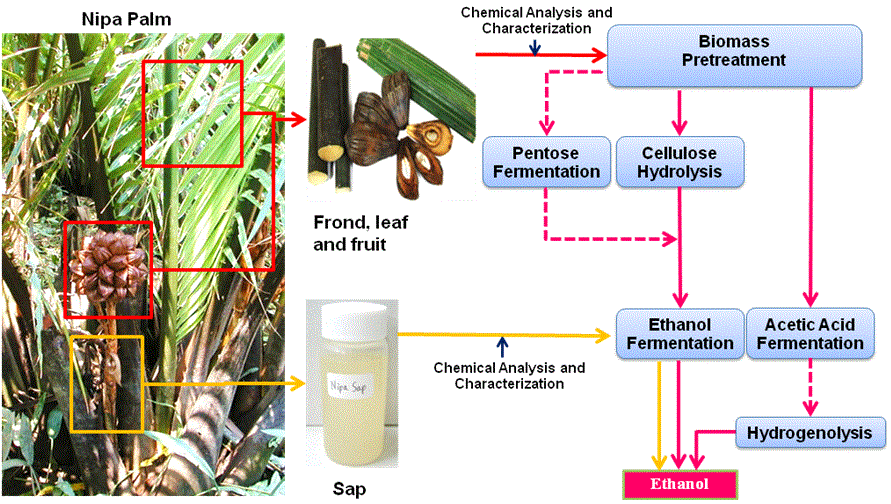Fermentation is the process by which microorganisms such as yeast and bacteria convert organic molecules into other products. For biofuels the typical useful fermentation products are ethanol and butanol, both of which can be used as liquid transport fuels.
Microorganisms, yeasts and bacteria, can be used to ferment organic biomass into alcohols and other valuable solvents. Fermentations occur in the absence of oxygen. Yeasts can be used to produce ethanol. Solventogenic clostridia are bacteria, which can be used to produce hydrogen gas, Acetone, Butanol and Ethanol, the so called ABE fermentation. Butanol is the main product. Yeasts are more tolerant to alcohol and therefore produce more than bacteria, however often the bacteria are capable of using a wider range of substrates. Ethanol and butanol have several advantages over petrol and diesel as fuels.
Product uses
Each product can be used for a variety of applications:
Acetone
Degreaser, paint thinner, glue dissolver, food additives, pharmaceutical & cosmetics industries.
Butanol
Fuel, polymer manufacture, pharmaceutical manufacture, extractant (hormones, antibiotics and vitamins), butanol is also used in paints, resins, dyes, brake fluid, degreaser & perfumes. Butanol has superior fuel qualities to ethanol
Ethanol
Fuel, antiseptic, paints & perfumes
Hydrogen
Power generation & coolant in power stations.
Usable Substrates
The substrates that can be used in this process are very extensive. By-products, leftovers and wastes of agriculture (for example from harvesting, husks, shells and stalks, leaves etc.), forestry (for example sawdust and fibres), municipals and industry (for example black liquor, wastewater, sewage, glycerol, dairy waste, distillers’/ brewery grains, paper and cardboard).
Advantages of ethanol and butanol
-
Can be produced sustainably and are renewable fuel sources
-
Adds oxygen to petrol/diesel blends – reducing greenhouse gas and unburned hydrocarbon emissions
-
Blend with petrol and diesel as a fuel extender
-
Higher octane rating than petrol/ diesel which increases engine performance
-
Lowers cetane rating (combustion efficiency) of diesel
Butanol versus ethanol
-
Not hygroscopic (does not pick up water)
-
Completely miscible with diesel (separation under cold and damp conditions is a problem with ethanol-diesel blends requiring emulsifier addition)
-
Low vapour pressure (easier and safer to handle) means less evaporation in comparison to ethanol, highly flammable vapours are a problem with ethanol
-
Blend with petrol to any per cent (ethanol limited to 85%)
-
No engine modifications required (less corrosive than ethanol) which means it can be added to any vehicle on the road. Indeed this was demonstrated by David Ramey who drove his unmodified Buick 10,000 miles across America on biobutanol
-
Can be handled & stored in current infrastructure for petrol
-
More similar properties to petrol and diesel therefore makes it easier to blend, it has a higher viscosity, reducing pump and injector leakage (observed with ethanol) which is important for fuel delivery in the vehicle
-
A longer hydrocarbon chain = more energy from its combustion compared to ethanol
Useful site links






